Mountain Goat Identification
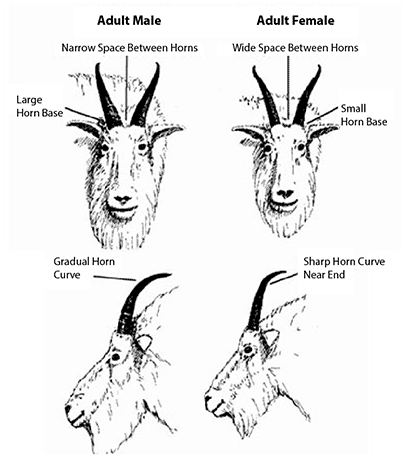
| Male | Female |
|---|---|
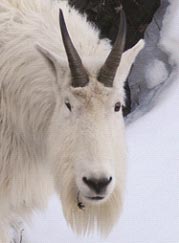
|
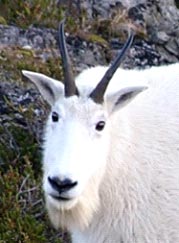
|
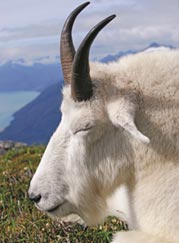
|
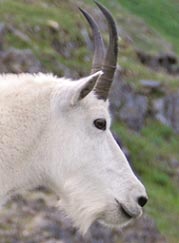
|
How to Judge Sex and Age by Horn Appearance and Size
Most seasoned mountain goat hunters agree that the most effective way to identify a billy is by stalking close enough to see the size and shape of the horns. By getting close enough to use horn characteristics to identify a goat's sex you accomplish two things; first, you reduce the chance of taking a female by mistake and second, you greatly increase your chances of a clean kill because you have reduced the range. Impatient hunters that take long shots have a higher risk of wounding loss, carcass and horn damage from falls, and self-injury from trying to recover a kill from steep terrain.
Horn Thickness
- Males have thicker horns with less space between the horns at the base.
- Female horns are thinner and more spindly.
Horn Curvature
- Male horns curve gradually.
- Female horns make an abrupt curve about 2/3 of the way to the tips.
Width of Horn Base
- Males have horn bases which are greater than the width of his eye.
- Females have horn bases equal to or less than her eye width.
Horn Length
Horn lengths are approximately the same in male and female goats of the same age so other more reliable horn characteristics should be used to distinguish the two sexes.
Generally an adult goat's ear is about six inches long.
- Kids have only short buttons up to one inch long during their first fall.
- Most yearling goats have horns about six inches long, which at a casual glance look much like adult horns. By the time a goat reaches the yearling age class, it has attained over half its expected horn length.
- Goat's two years old and older will have horn lengths longer than their total ear length.
- An ear length and one half should equal a 9-10" horn length. In the Boone and Crocket Club record book the top ten record males all had horns longer than 10 inches.
Brooming
Brooming (wearing down of the tip of the horn) will affect the total length of a goat horn. Most males that are four years old or older show evidence of brooming (or the wearing down of the tip of the horn). Two 11-year-old males which were harvested on Kodiak during the same season differed by over an inch (8 ¾ inches versus 10 ¼ inches) because of the wearing down of tips of the horns.
